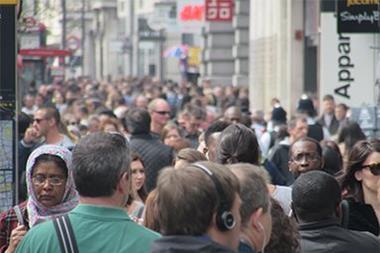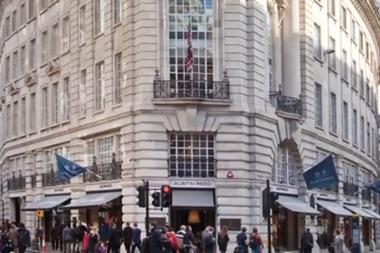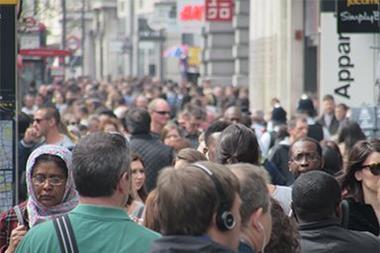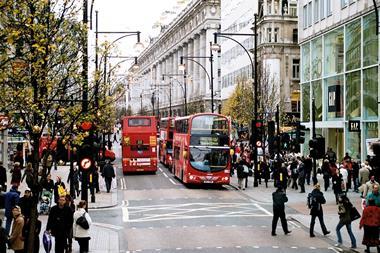The decline in retail footfall accelerated in August, although retail parks once again bucked the negative trend.
Shopper numbers slipped 1.2% compared to the same month last year – a faster decline than the three-month and 12-month averages of 0.4% and 0.3% respectively.
High-street footfall’s decline deepened in August, decreasing by 2.6% compared to July’s 2.1%, although shopping centre decline slowed from -1.3% to -0.8%.
However, retail parks continued to go against the grain, with footfall increasing 1.6% in August, just below July’s increase of 1.7%.
The Southeast, the East and Wales reported growing footfall, with the fastest growth in the East. The region has now experienced nine consecutive months of growth.
By contrast, the steepest overall decline during the month was in Greater London and Northern Ireland, which dropped 2% and 2.3% respectively.
The biggest decline in high-street footfall was in the East Midlands, with a 4.9% drop marking the sixth consecutive month of year-on-year decline.
Online migration
Part of the reason for the ongoing drop in footfall is the rise in online shopping.
Online sales rose 11% in August, the greatest incline so far this year. Springboard marketing and insights director Diane Wehrle attributed that to both bad weather and inflation driving consumers to search for the best deal.
She added that this was “likely to only become more significant as inflation continues to increase its bite on household budgets”.
BRC boss Helen Dickinson said: “The increasing number of locations falling further and further behind continues to grow. These areas clearly have their work out to attract custom with the right mix of retail, leisure and other facilities and ensuring ease of access and parking.
“From a retailer point, the sheer cost of doing business on our high streets has direct implications for the affordability of retailers’ investments in new or refurbished stores.
“A far more concerted and urgent effort is required from policymakers to stem and ultimately reduce the cost of doing business, particularly in our more economically fragile communities. Not applying the planned inflationary increase to business rates next April would be a place to start.”


























No comments yet